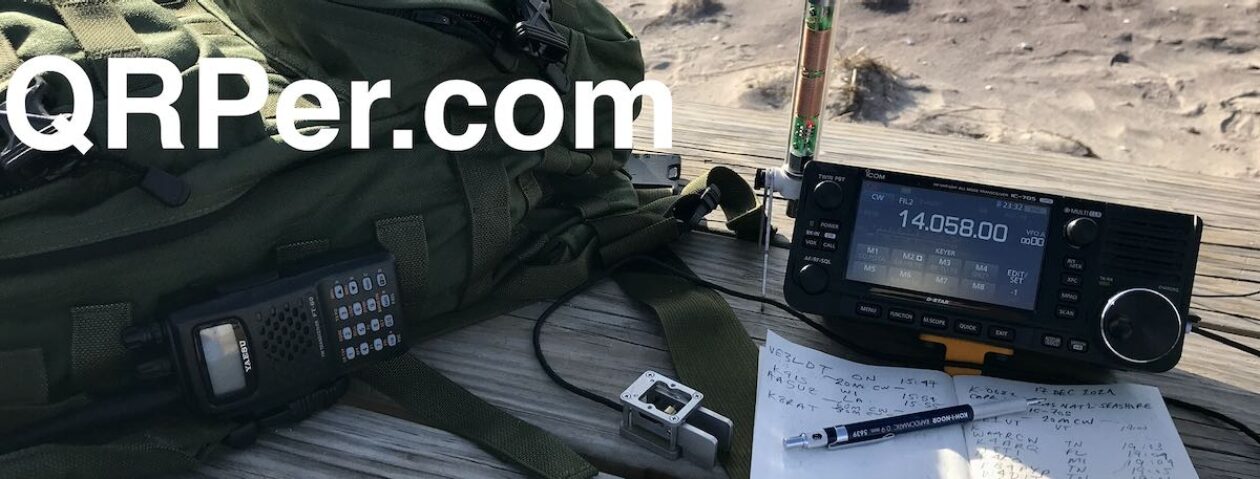
John (WA3RNC) has just announced a new firmware (V.0.24) upgrade for the Penntek TR-35 that will start shipping in all TR-35 orders starting Sunday April 23, 2022.
The new processor adds two new features:
- The ability to record and playback two CW message memories
- A function to toggle the display from black with blue characters to solid blue with black characters
Of course, the big upgrade–in my world–is the addition of CW message memory keying and I can confirm that it works very well. More on that below…
Obtaining the upgrade
As John (WA3RNC) states in his announcement:
The good news is that any TR-35 can be upgraded with a simple replacement of a properly programmed plug-in microprocessor, or with the reprogramming of the original microprocessor. No other hardware changes are required.
But…there is bad news. The availability of the Atmega328P-PU microprocessor has gone from “buy it anywhere for $1.95″ in mid-2021″ to “virtually unavailable anywhere at any price” today. Delivery dates are quoted as May of 2023 for orders that I placed last year.
[…]Because of this critical chip shortage, I do not have a sufficient inventory of the Atmega part to be able to send out programmed microprocessors for upgrades. What parts I do have are destined for production of TR-35 and TR-45L transceivers.
Therefore, a TR-35 firmware upgrade will require that the transceiver be sent to me freight prepaid for reprogramming, along with funds for return shipping and insurance of $15.00.
Understand that there is no charge for the actual upgrade reprogramming, only for the cost of returning your unit to you.
I think is excellent customer service, actually, and a clever way to get around the chip shortage: use the chip you already have.
Again, if you’re buying a new TR-35, it’ll ship with the latest firmware.
If CW message memory keying or inverting the OLED screen colors aren’t important to you, it’s not necessarily worth upgrading because the new firmware only includes the new features.
Testing message memories
Recently, John sent me an upgraded chip with an early Beta version of the new firmware to thoroughly test in the field. I replaced the TR-35 chip myself.
I tested the new functionality in the shack and on a dummy load.
As with most built-in CW message recorders, you’ll need to set the CW speed to a comfortable setting before recording. During the recording process, you need to send accurately spaced characters, else, for example, the software might interpret the “AN” in your callsign as a “P.”
The first time I set memory 1 to “CQ POTA DE K4SWL” it took three tries to get it right. When I set the second memory to “BK TU 73 DE K4SWL” I recorded it in one go.
Recording message memories on the TR-35 is at least as easy as directly recording a message on my KX2 or KX3. I’m pleased.
In the field
 Last week, I took the upgraded TR-35 to the field and used the message memory keying during my activation.
Last week, I took the upgraded TR-35 to the field and used the message memory keying during my activation.
It worked beautifully.
John sorted out a clever way to initiate playback without having to make any hardware additions to the radio:
- To play a message memory, simply tap the AUX switch down and then hit the left side of your paddle to send message #1 or the right side to send message #2.
- Recording messages works the same way, but instead of a short press of the AUX switch, you initiate a long press.
Even this early version of the upgrade worked well.
Field report and video coming soon!
I’m going to push the field report from last week to the front of the line because I know many of you will be curious to see how it plays in the field. Hopefully, I can post this by Monday (April 25).
My Penntek TR-35 Review
FYI: My full review of the TR-35 will be in the May 2022 issue of The Spectrum Monitor magazine.
 I must thank my buddy John (AE5X) for this excellent tip.
I must thank my buddy John (AE5X) for this excellent tip.













